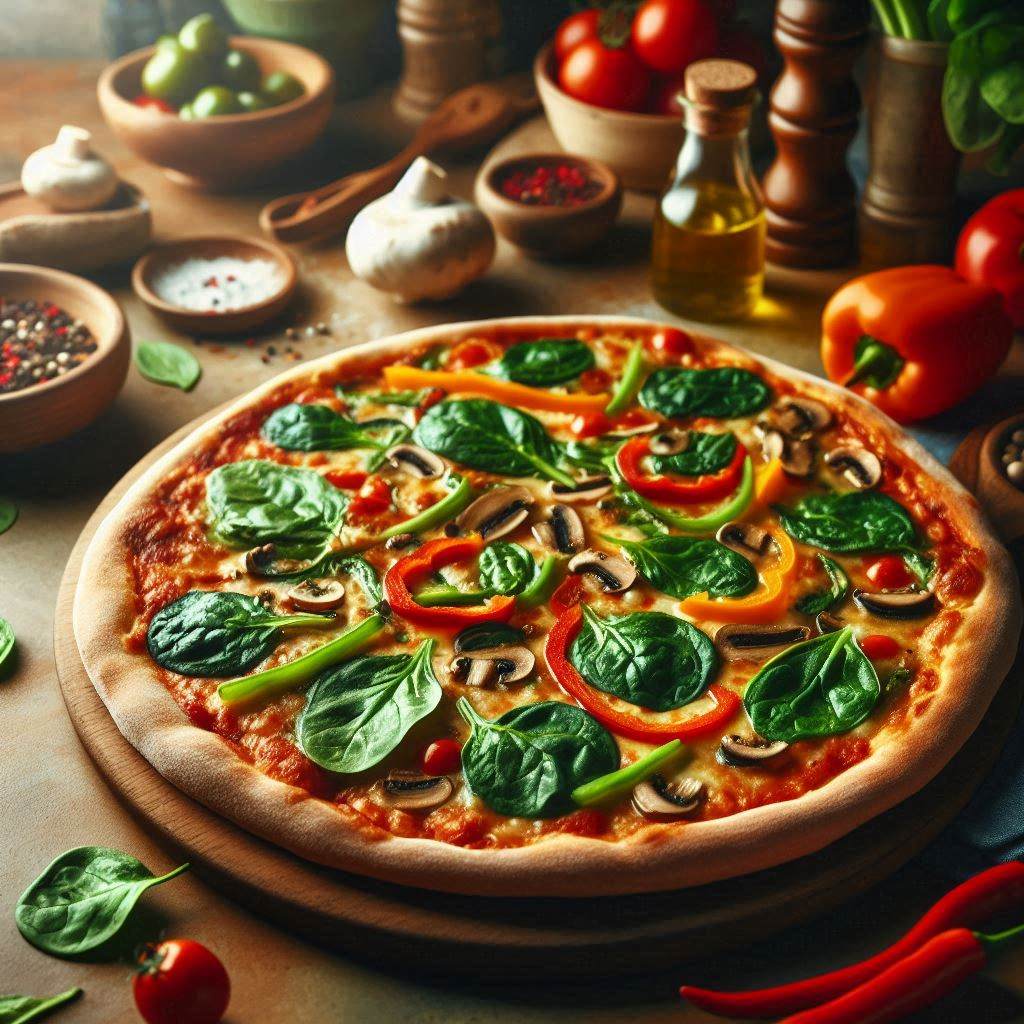Living with Crohn’s disease can make dining out feel like a game of culinary roulette. You want to enjoy the company of friends, but every menu feels like a minefield of potential triggers. Don’t worry—eating out with Crohn’s disease is entirely possible (and even enjoyable) with a little planning, savvy ordering, and the confidence to speak up about your needs. Let’s dive into how to find Crohn’s-friendly restaurants and make meal choices that keep your stomach happy.
Do your research
When searching for Crohn’s friendly restaurants, check their online menus before visiting. Look for gluten-free, low-fibre, or low-residue options that work for you. If you’re unsure about ingredients, don’t hesitate to contact the restaurant and ask if they can accommodate dietary restrictions related to Crohn’s disease. Seek out dishes that are expected to be easy on your stomach. If there are any uncertainties regarding ingredients or cooking techniques, contact the restaurant and ask. Many restaurants are open to catering to restrictions so it’s worthwhile asking whether they can customise a dish to accommodate your needs. Check out their menu online to see if they offer any gluten free, low fibre or low residue options. It’s also helpful to read reviews from diners to find out if the restaurant can accommodate restrictions.
Dining out with Crohn’s disease can feel intimidating, but I’ve learned to approach it like designing a bespoke experience. By researching menus in advance and confidently asking questions, you’re not being a “picky eater”—you’re simply exercising choice and control. In fact, many restaurants welcome the chance to cater to specific dietary needs, seeing it as an opportunity to provide exceptional service. This mindset turns dining out into a collaborative effort—a way to enjoy great food while respecting your health. Trust me, it’s not about limitations; it’s about finding what works for you and enjoying the experience with confidence.
Don’t be afraid to ask questions when eating out with Crohn’s Disease
Once you’re at the restaurant don’t hesitate to ask the server questions about the menu. Enquire about ingredients, how dishes are prepared and cooking methods and if they can make substitutions. When placing an order it’s crucial to communicate your preferences clearly and confidently. Feel free to ask about the cooking methods or suggest changes such as opting for grilling over frying, selecting olive oil instead of butter or excluding specific ingredients. Many restaurant employees are willing to accommodate your needs especially if you mention that it’s related, to a health issue. Being clear about your needs will help the serving staff assist you in making choices.
Be mindful of foods that may trigger Crohn’s symptoms
Spicy dishes, fatty foods, or items commonly found in fast food Crohn’s disease scenarios like fried chicken or greasy burgers. While indulging occasionally is fine, understanding your triggers helps you make better dining choices. By recognising the foods that lead to flare ups you can make decisions when eating out. For instance if you are aware that consuming fat or spicy foods tends to be problematic you can avoid dishes, like fried chicken or spicy curries.
Mindful Eating: Tips for Dining Out with Crohn’s
Portion control is key when dining out. Large meals can overwhelm your digestion, leading to discomfort. Here are a few hacks to keep your portions manageable:
- Order Starters as Mains: Many starters are smaller portions, making them a perfect choice.
- Share a Meal: Split an entree with a friend or ask for a to-go box when your food arrives.
- Customise Portions: Many restaurants will offer half-sized meals upon request.
These small adjustments can help you enjoy your meal without pushing your digestive system to its limits.
Plan ahead
If you have plans to dine out, plan your day accordingly by eating meals throughout the day to avoid overeating when you get to the restaurant. Big portions can make symptoms worse. Take your time with eating. Pay attention to your body’s signals.You could also consider bringing some snacks along if the restaurant doesn’t offer choices that suit your needs.
Speak up about your needs when dining out with Crohn’s Disease
Don’t be afraid to speak up; When dining with friends or family don’t hesitate to let them know of your restrictions. It’s better to speak up and ensure you have an enjoyable meal than endure discomfort later on. If you’re concerned, about appearing picky remember that your well being comes first.
Try new things
While its essential to be mindful of what triggers your symptoms don’t shy away from trying dishes. There are plenty of nutritious options that might pleasantly surprise you. For instance quinoa, a seed to grains is low in fiber and rich in protein. Alternatively consider swapping fries for potato fries, which are lower in fat and higher in fibre.
Mind your portion size
Eating large meals can sometimes be hard, on your stomach and may cause discomfort. It’s a good idea to opt for smaller portions, children’s-size meals or share a meal with someone to avoid this.If the restaurant offers large servings, you could request a half portion or plan to take some of it home. Having smaller regular meals during the day is gentler, on your digestion compared to eating a lot in one go.
Seek expert advice
Seeking guidance from a registered dietitian or nutritionist specialising in Crohn’s disease is always wise. They can assist you in creating a customised dining plan and suggest wholesome choices, for you when eating out.
Fast Food with Crohn’s Disease: What to Avoid and What Works
Fast food is generally considered a poor choice for those with Crohn’s disease, but there are strategies to handle occasional indulgences;
Drawbacks of Fast Food; Fast food typically contains high amounts of fat, sugar and salt which can cause irritation to the digestive system and trigger inflammation. The processed nature of these foods combined with preservatives and artificial additives can make them hard to digest increasing the risk of a Crohn’s flare up. Items like burgers, fries and sugary drinks present challenges due to their fat and sugar levels.
Occasional Treats; In situations where fast food’s the only option available there are ways to minimise its impact on your condition. Opting for grilled options instead of fried ones, avoiding high fat sauces and sugary drinks can help mitigate risks. Look for menu choices that are lower in fat and fibre such, as grilled chicken sandwiches or salads (minus croutons or creamy dressings) or a plain jacket potato. It’s also wise to eat slowly and not finish the entire portion if you feel full before finishing your meal.
Healthy Alternatives; Whenever feasible consider healthier alternatives instead of traditional fast food options. Restaurants these days provide nutritious takeaway choices, such as grilled chicken, steamed veggies and lean protein salads. Some fast food joints have also included items on their menus like fruit sides, yogurts and sandwiches, with whole grains. Another option is to make a homemade meal before you go out to make sure you have a healthy choice prepared in advance.
Can I Eat KFC with Crohn’s Disease?
Although KFC may seem tempting it’s crucial to approach this fast food chain if you are managing Crohn’s disease;
Evaluating KFCs Menu; KFC is famous for its fried chicken, which is rich in fat and may not be ideal for individuals with Crohn’s disease. However some menu selections might be more manageable especially if you go for grilled chicken instead of fried. The grilled chicken option at KFC contains less fat. Is generally gentler on the digestive system. It’s important to consider the side dishes—opt for choices like rice or corn on the cob over high fat options like chips or coleslaw. Skip the fizzy drinks and go for water instead. Keep in mind that balance is important. Try not to overdo it as even the better choices can be risky if consumed excessively.
Fried Foods and Crohn’s; Fried foods can pose a challenge for those with Crohn’s disease due to their high fat content, which can slow down digestion and increase the risk of a flare up. The oil used in frying can irritate the lining of the gut leading to symptoms such as cramps, bloating or diarrhoea. If you’re determined to dine at KFC it would be better to steer of fried selections entirely.

Is Pizza OK with Crohn’s Disease?
Pizza can sometimes pose challenges for individuals with Crohn’s disease. With a few adjustments it can still be enjoyed on occasion;
Ingredients to Be Cautious of in Pizza; The typical ingredients found in pizza may not sit well with those dealing with Crohn’s disease. Cheese in large quantities can be tough on the stomach and might lead to bloating or digestive issues. Tomato sauce is acidic and has the potential to irritate the lining of the gut particularly during a flare up. Processed meats like pepperoni or sausage are rich in fats and additives that could also spark symptoms. It’s advisable to steer clear of these ingredients if they tend to trigger sensitivity.
Customising Your Pizza Order; To make pizza more suitable for individuals with Crohn’s disease consider adjusting your order. Opt for a thin crust over a thick or deep dish one as it is lower in fat and gentler on digestion. Use cheese or opt for a lactose free alternative if dairy isn’t well tolerated by you. Choose vegetable toppings such as spinach, peppers or mushrooms which are generally kinder to the digestive tract.
Exploring Pizza Choices; If you have a fondness, for pizza but wish to avoid potential triggers exploring gluten free or dairy free options might be worth considering. Lots of pizza places these days have gluten free bases that could be gentler on your stomach. They also have non dairy cheese options for those who can’t handle lactose. You can also make pizza at home using ingredients you know are safe for you, such as a cauliflower pizza base, homemade tomato sauce with low acidity, and your favourite low-fat toppings.

Can I Eat Subway with Crohn’s Disease?
Subway can be a relatively safe choice for those dealing with Crohn’s disease especially if you make careful selections;
Customising Your Subway Sandwich; Subway provides the flexibility to customise your sandwich, which is beneficial when managing Crohn’s disease. Begin with grain or gluten free bread if possible as these are usually gentler on the stomach. Opt for meats like turkey or chicken breast instead of processed meats like salami or meatballs. Load up on veggies that sit well with you such as lettuce, cucumbers and peppers while avoiding those in fibre or acidity like onions and pickles.
Ingredients to Watch Out For; Pay attention to the dressings and sauces offered at Subway since many are high in fat and sugar which could worsen symptoms. Go for choices such as mustard, vinegar or a small drizzle of olive oil. Also be cautious with cheese—if dairy is problematic for you consider skipping it or choosing a milder option like cheese. If crispy or hard textures bother your digestion skip toasting the sandwich.
Healthier Options; Subway has menu items that are lower in fat and better suited for a diet friendly to individuals, with Crohn’s disease. Opting for salads topped with proteins and light dressings can serve as a nice change from sandwiches. If you’re in the mood for a sandwich, consider ordering a smaller 6-inch sub, and having it with a piece of fruit or a side of soup that is low in fat and not cream-based.

Finding Crohn’s-Friendly Restaurants: A Proactive Approach
When it comes to eating out with Crohn’s disease, knowledge is your best ally. Before stepping out, take a few minutes to:
- Check Menus Online: Search for low-fibre, gluten-free, or low-residue options. These are often highlighted in allergen menus or dietary sections.
- Read Reviews: Platforms like TripAdvisor or Google Reviews often include notes from diners with dietary restrictions.
- Call Ahead: A quick call to inquire about accommodations can save stress. Restaurants appreciate the heads-up and often have solutions ready.
By taking these small steps, you can transform the dining experience from nerve-wracking to seamless.
Dining Out with Crohn’s: Tips for Confidence and Comfort
It’s important to remember that you’re not going through this alone. The Crohns & Colitis Foundation reports that about 3 million Americans are dealing with bowel disease and many of them encounter similar difficulties when eating out. Dr. David Rubin, who heads gastroenterology, hepatology and nutrition at the University of Chicago Medicine emphasises that individuals, with Crohn’s disease can still have a nice time when dining out and exploring new cuisines but they should be mindful of what triggers their symptoms and make wise choices.
Finding Crohn’s-Friendly Restaurants: A Proactive Approach
When it comes to eating out with Crohn’s disease, knowledge is your best ally. Before stepping out, take a few minutes to:
- Check Menus Online: Search for low-fibre, gluten-free, or low-residue options. These are often highlighted in allergen menus or dietary sections.
- Read Reviews: Platforms like TripAdvisor or Google Reviews often include notes from diners with dietary restrictions.
- Call Ahead: A quick call to inquire about accommodations can save stress. Restaurants appreciate the heads-up and often have solutions ready.
By taking these small steps, you can transform the dining experience from nerve-wracking to seamless.
In conclusion, eating out with Crohn’s disease may require a bit of extra planning and preparation, but it’s definitely possible to do so safely and enjoyably. By doing your research, being mindful of your triggers, planning ahead and not being afraid to speak up, you can still enjoy dining out with friends and family. And who knows? You might even discover some new healthy and delicious dishes along the way.
Ultimately dining out while managing Crohn’s disease might demand some forethought and organisation but its entirely feasible to do so in a safe and pleasant manner. Through research awareness of personal triggers, proactive planning and willingness to communicate openly you can continue to relish dining experiences with loved ones. Additionally there’s a chance you may stumble upon some delicious and nutritious options along the way. Dining out can be daunting. You can always enjoy homemade Crohn’s-friendly meals using our recipe ideas to keep your diet both safe and satisfying.
- Before You Go: Bookmark this guide and take it with you for easy reference the next time you’re eating out.
- Have a Go-To Dish?: Share your Crohn’s-friendly dining tips in the comments to help others!





